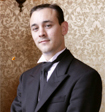
The Modern Butlers’ Journal volume 11, issue 10
International Institute of Modern Butlers
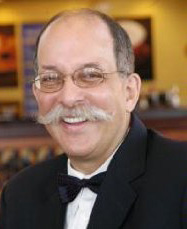 Message from the Chairman
Message from the Chairman
At the tail end of a two-month training program at several five-star resorts in the Maldives, I stumbled upon a living legend: a most loquacious and knowledgable general manager at the southern-most island of the Maldives chain, who happened to be the very first hotel butler. He shared many stories, as well as accomplishments, that show that determination and intelligence know no bounds. His name is Mr. Allwyn Drago, and he is from India. When Mr. Oberoi Senior decided to implement butler service in his hotel palaces around the country, he called upon quite a few individuals to be the first butlers; recognizing Mr. Drago as an exceptional gentleman, he made him his personal butler, too.

Technically, hotel butlers have existed for the last 150 years in a handful of luxury hotels (since the first was founded in London—the Langham—in 1865): each hotel had a butler on staff to service royalty or nobility in order to provide the level of service to which they were accustomed in their own palaces.
It was Mr. Oberoi Senior who took the initiative in modern times to bring butler service to VIP guests. It is gratifying to see that the butlers originally performed quite a few of the services that one would expect of a butler who had been trained properly. The full range of services is greater today, for those trained by the Institute, but this is only to be expected as the profession found its feet and more people offered creative ways of servicing guests.
One point I was able to correct after many years of teaching the wrong information: I had thought the Oberoi chain had implemented butler service in 1982, but it was actually 1986. Which means that other hotels and chains were not far behind in catching on to the notion.
Not All Soaps are Created Equal

Mr. Kobi Gutman continues to work in his free time on creating custom-made soaps for his guests. He plans to produce a short technical manual for the use of butlers who would like to be able to turn this commodity into a “wow” factor with minimal outlay of effort and cost. Stay tuned for more information!
Butlers in the Media
“Butler robots” that are four times more productive than humans, handle cargo in a Hong Kong e-commerce fulfillment center. And a scientist writes about the complexities of creating a robot that can fold clothes, which gives some idea of how much robot butlers have to catch up with us mere hominids. The article opens with some interesting facts, too: “The idea of a robotic servant is a lot older than you probably realize. It doesn’t just go back to the 1960’s cartoon series The Jetsons, whose Rosie the Robot could prepare meals, clean the house, and solve unexpected troubles. As early as the 3rd century BC, the ancient Greek scientist, Philo of Byzantium, built an iconic human-like robot maid that could pour wine when a cup was placed in its hand.”
The news this last month was heavier on real butlers than on robot butlers, which is a pleasant change, although in the case of the remorseful paedophile butler who was busted, the less of that sort of exposure for our profession, the better. The same goes for Mr. Burrell’s continued antics, this time on Celebrity Big Brother: cashing in on his past glory by giving away private details of his former employers. Will he ever get it? Probably not.
One interesting angle on Downton Abbey is how Jim Carter, the actor who pays Carson, the butler in the television series, is asked continually by his fans to be their real-life butler—showing that there is still plenty of demand, or nostalgia at least, for the stiff butler of old. The views Mr. Carter is reported as expressing in the article show him to be suitably curmudgeonly, so it seems he has immersed himself deeply in his role, and like his fans, is not distinguishing 100% between reality and TV—unless, of course, he was picked for the role precisely because he has a butler mindset!
Danone yoghurt is offering ten winners of a promotional campaign the opportunity to be served by handsome “hunks” who will “undergoing intensive butler training.” My goodness, what a circus society is turning into—again.
Kudos to Mr. Andrew Lowrey of Precise Home Management, who had a good write-up in the Baltimore Style magazine on his life in, and of, service.
A good article on St Regis butlers—the scope of their services could be improved quite dramatically by doing many more, less high-key but useful and relevant services than the sabering of champagne bottles.
Another butler school, and another butler who talks too much about his previous employers; but overall, an interesting article and we wish the school well.
And lastly, a well-written article about hotel butlers: “I think about the strange butler-guest relationship that is increasingly being imposed by the hospitality industry. High-end hotels are going gangbusters with butlers, the ultimate luxury service accessory.” But then the writer launches off into the likes of pillow butlers and bath butlers.
Let’s Talk about Mixology, Part 5
by Amer Vargas
The Red Eye
“Ever worked behind a bar?”
“My uncle is in the business.”
“Do you know how to make a ‘Red Eye,’ mister … what’s your name?”
“Brian Flanagan.”
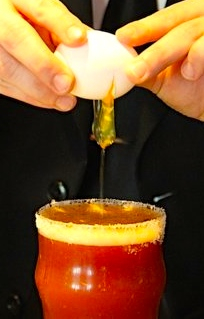
Today, we pay tribute to one of the film characters who lived once, but never died. After leaving the army and moving back to New York City, the young Brian Flanagan, brilliantly played by Tom Cruise in the 1988 movie, Cocktail, began work as a bartender at nights while studying for a business degree. His initial mediocre work as a bartender turned into a passion under the mentorship of his boss, Doug Coughlin.
This film put the spotlight on the fun and charm of bartending and, more than that, the drinks that are produced when one works with devotion, passion, and a vision.
So, the Red Eye is one of Coughlin’s favorite drinks and which, as he states in the film and many can corroborate in real life, helps to dispel hangovers.
The Red Eye earned its name from the predominant color of the concoction, and the fact that a raw egg is added, looking like a floating eyeball.
The preparation of the cocktail is really simple: frost a highball glass and pour in 1 oz/2.5 cl of Vodka; 12 oz/35 cl of beer; 4 oz/12 cl of tomato juice; and a raw egg. Do not stir, or the egg may break, and it needs to be in one piece so the imbiber can down it in one go. Not recommended for the squeamish, just for the hung-over!
Enjoy your drink…and your movie!
Mr. Vargas is the Institute’s Vice President for Europe and can be contacted via AmerVargas @ modernbutlers.com
Recent Training and Graduates
Graduation for some of the trainees from Anantara Veli, Dhigu, and Naladhu, in the Maldives. Each resort being on its own island but under one leadership (Minor Hotel Group), and catering respectively to families, honeymooners, and the very wealthy who prefer their privacy. The trainees did very well on their refresher course, as did some trainees fresh out of college and engaging in a corporate-sponsored program to introduce them to the hospitality industry. 50% of the program participants from the prior year stayed on at the resorts, having chosen to pursue their careers in hospitality.
Of Butlers and Roses, Part 18 of 25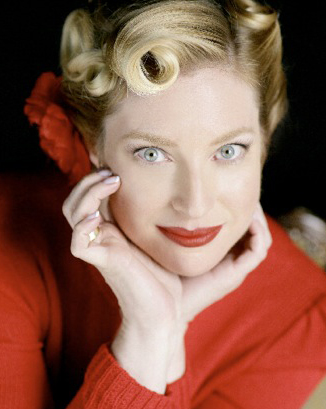
by GJ dePillis
Medicinal Roses as Described in Ancient Texts
Roses used to be a staple in apothecaries (Chemists/Drug Stores). Red roses were mentioned in various medicinal texts because it was thought the stronger the fragrance, the more potent the rose oil, and thus healing properties of the roses.
What rose-related medicinal treatments were common?
- Drinking rose water would stave off a queasy stomach or even prevent vomiting;
- Rose hip tea, or rose honey, would ease coughing;
- Topical applications would alleviate joint pains and rheumatism;
- Rose-scented oils would revive swooning or fainting individuals (I do suspect most of these patients were corseted ladies struggling for oxygen);
- Fevered patients would find relief;
- Drinking rose tea, rose water, or rose wine would ease constipation or other digestive problems;
- When mixed with mint leaves, heated and applied to the chest and stomach, it was thought restful sleep would be encouraged; an ease of breathing would ensue for those who were congested; and an easing of muscle aches and the soothing of an agitated patient would result;
- Sore throats would be soothed when taking a spoonful of rose honey;
- Rose oils mixed with lotions would treat skin sores;
- Mixing rose oil with apple cider vinegar and spearmint leaves would reduce dandruff;
- Spraying chilled rose-water would refresh a person on hot summer days;
- Rose petals soaked in white wine for at least two days, then strained, and one goblet-full imbibed would a) diminish a headache, and b) ease the aches associated with wounded gums;
- Taking the hairy seeds out of the rose hip, mixing them with sugar and hot water, and straining the liquid, would treat diarrhea when the concoction was drunk;
- Drying rose-hip pulp and using the powder in the mouth of a colicky infant (experiencing pain from intestinal gas) would calm them.

So, next time you are planning to use the roses from the garden, don’t just think of them as decorative elements around the house!
Ms. dePillis is a freelance contributor to the Journal who is based on the West Coast of the United States. She can be reached via depillis at gmail.com
The White Windermere Aushomer rose
photo by David Austin Roses
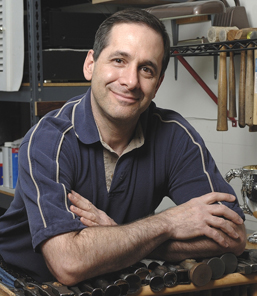 Consulting the Silver Expert
Consulting the Silver Expert
by Jeffrey Herman
Q: When was stainless first used in table knives?
A: Although American Elwood Haynes discovered stainless steel and patented it in 1919, it wasn’t until 1924 that a stainless steel table-knife blade was invented by an Englishman, Dr. William Herbert Hatfield. It was called 18/8 stainless steel (18% chromium, 8% nickel), an alloy which is still used today. Prior to this development, carbon steel was used, which was then replaced with plated-carbon steel.
Mr. Herman continues to offer his services to our readers for any questions you may have about the care of silver. Either call him at (800) 339-0417 (USA) or email jeff at hermansilver.com
The Institute is dedicated to raising service standards by broadly disseminating the mindset and skills of that time-honored, quintessential service provider, the British Butler, adapted to the needs of modern employers and guests in staffed homes, luxury hotels, resort, spas, retirement communities, jets, yachts, & cruise ships around the world.

